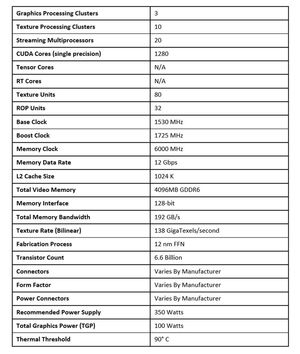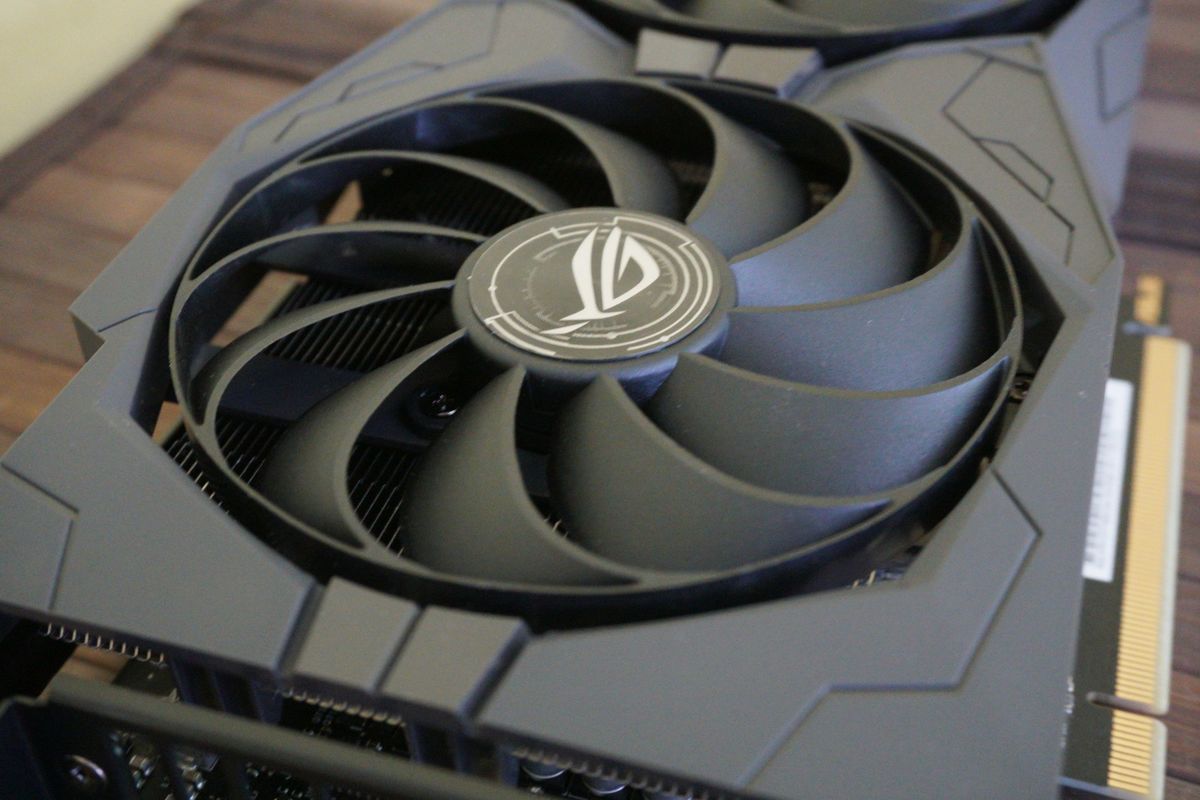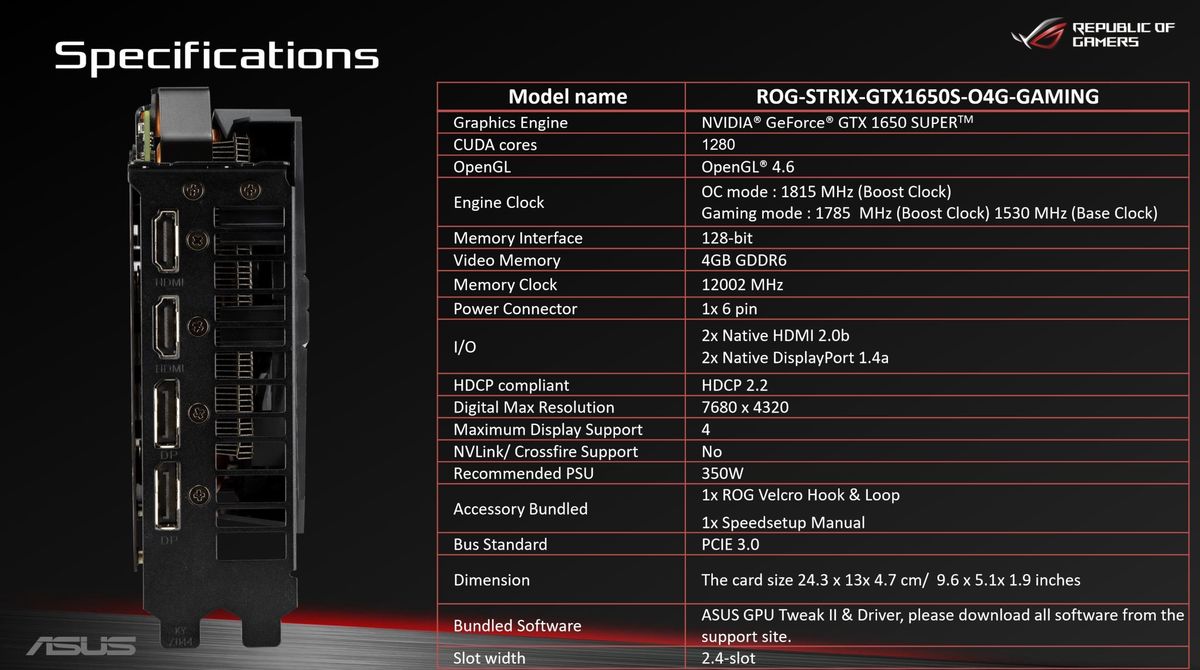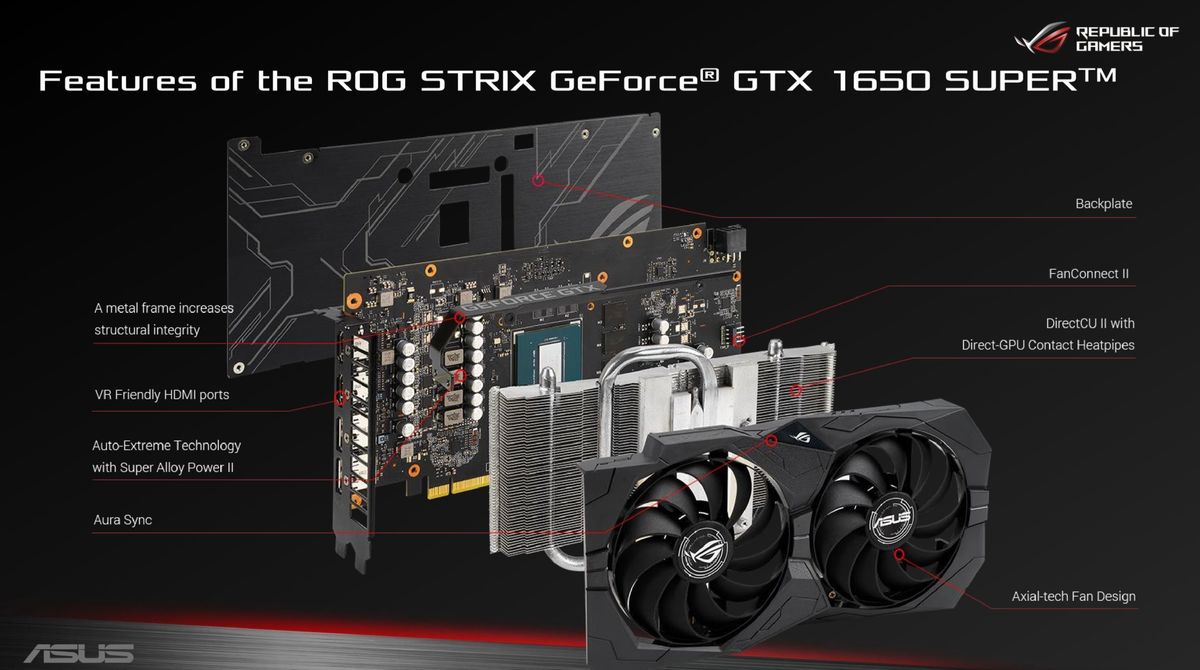Nvidia’s $160 GeForce GTX 1650 Super had a super bizarre launch.
Its still-available predecessor, the $150 GTX 1650, skipped the vastly improved Turing NVENC video encoder and got pummeled in performance by AMD’s Radeon RX 570, a much cheaper GPU, all to let the card fit into the motherboards with no extra power cabling required. With AMD’s next-gen Radeon RX 5500 series looming, Nvidia revealed the drastically turbocharged GTX 1650 Super—but then failed to inform press of pricing or provide drivers for launch day reviews. Those are both extremely unusual moves, ones mirrored in recent history only by Nvidia’s attempt to bury reviews of the original lackluster GTX 1650. Because of that, we went so far as to recommend avoiding the new card until reviews surfaced.
Even weirder? The GeForce GTX 1650 Super kicks ass. Nvidia’s latest graphics card doesn’t drastically redefine the sub-$200 market, but for the first time in years, AMD’s aging Polaris-based GPUs are no longer the budget gaming champions. The Radeon RX 580 is finally dead.
Let’s dig into the $170 Asus ROG Strix GeForce GTX 1650 Super.
Nvidia GeForce GTX 1650 Super specs, features, and price
Nvidia completely overhauled the Super-fied version of the GTX 1650. It’s got a new GPU, a new video encoder, and even blazing-fast new GDDR6 memory. Rather than reinvent the wheel, here’s what we said when Nvidia first revealed the GTX 1650 Super alongside the GeForce GTX 1660 Super about a month ago:
“While the original GTX 1650 uses Nvidia’s smallest TU117 GPU, the new GTX 1650 Super uses a cut-down version of the larger TU116 GPU found in the GTX 1660 series. It should be significantly more powerful, with 1,280 CUDA cores (compared to the original’s 896), higher clock speeds, the aforementioned 4GB of upgraded GDDR6 memory over a 192-bit connection, and well, just more everything.
It also includes Nvidia’s newer and much more efficient “Turing” Encoder, after the company received criticism over saddling the original GTX 1650 with its last-gen encoder. “Turing NVENC is up to 15 percent more efficient—requiring 15 percent less bitrate at the same quality level—than previous-generation Pascal NVENC when encoding with H.264, and 25 percent for HEVC,” Nvidia’s reviewer’s guide says. “In other words, you get an instant upgrade in image quality without having to bump up your streaming rate.” EposVox, an excellent source for streaming reviews and information, tested Turing NVENC in RTX GPUs and called it “beyond impressive.”
 Nvidia
Nvidia
The GeForce GTX 1650 Super's reference specs.
This is a substantial overhaul, in other words. Merely swapping out the original GeForce GTX 1660’s slower GDDR5 memory for cutting-edge GDDR6 was enough to give it a solid performance boost, so pairing that with a significant GPU upgrade should help propel the GTX 1650 Super far beyond the vanilla GTX 1650—and it does, as you’ll see in our benchmark testing later.
Packing so much more potency into the new-look Super also negates the biggest selling point for the vanilla GTX 1650: The ability to run without any extra power cables. While baseline models of the original 75-watt GeForce GTX 1650 can draw their power from your PC’s motherboard alone, making them ideal for turning office machines into easy-peasy gaming rigs, the 100W GTX 1650 Super demands a supplemental six-pin power connector. Most existing gaming rigs and standalone power supplies should easily meet that need, however, and the $150 non-Super GTX 1650 is still sticking around for people who can’t manage the extra power connection. (Given how much more powerful the GTX 1650 Super is for just $10 more, we’re hoping the original gets a price cut soon.)
 Brad Chacos/IDG
Brad Chacos/IDGAs with the GTX 16-series graphics cards, Nvidia isn’t releasing a Founders Edition model, leaving the market to add-in board partners like Asus, EVGA, Gigabyte, and so forth. We’re reviewing the $170 Asus ROG Strix GeForce GTX 1650 Super. Even with a mere $10 premium, it’s the crown jewel of Asus’s GTX 1650 Super lineup, which also includes the $165 GeForce GTX 1650 Super Phoenix Fan Edition and $160 Asus TUF GTX 1650 Super.
 Asus
Asus
The Asus ROG Strix GTX 1650 Super's specifications.
Asus cranked up the ROG Strix’s clock speeds. While the reference GTX 1650 Super specifications top out at a 1,725MHz boost clock, the ROG Strix’s default Gaming BIOS hits 1,785MHz. If you install the company’s GPU Tweak II software, activating OC Mode bumps that all the way up to 1,815MHz. Alternatively, a secondary Quiet BIOS accessible via a physical switch on the card reduces clock speeds by a small amount to decrease fan noise. The faster Gaming profile is damned quiet already, though, so we only recommend the Quiet BIOS option if you’re interested in silent desktop usage.
 Brad Chacos/IDG
Brad Chacos/IDG
The Asus ROG Strix GTX 1650 Super's dual-BIOS switch.
 Asus
Asus
A visual breakdown of the Asus ROG Strix GeForce GTX 1650 Super's physical design.
The card’s outfitted with the premium design common to the Strix series despite its budget price. Asus built the card with its “Super Alloy Power II” premium components, its superb Direct CU II heatsink with copper heatpipes that come into direct contact with the GPU, and long-bladed dual axial fans. Those fans include 0db technology that keeps them idle until you fire up a strenuous graphics workload and temperatures exceed 55 degrees Celsius, though you’ll need to flip over to the Quiet BIOS to activate 0db. It’s utterly silent during normal desktop usage and incredibly quiet even under load. An attractive metal backplate, a six-pin power connector, and two each of HDMI and DisplayPorts complete the physical package.
 Brad Chacos/IDG
Brad Chacos/IDG
Port report
The affordable $170 graphics card even includes several fancy extras. The ROG Strix GeForce GTX 1650 Super includes a Fan Connect II header that lets the GPU’s temperature control one of your case fans for more responsive cooling, while RGB lighting accents can be managed via the company’s Aura Sync software. If you’re rocking an Asus motherboard, too, you can synchronize their RGB elements. Finally, the company’s optional GPU Tweak II software provides real-time performance monitoring, thermal controls, and overclocking capabilities, including the one-button OC Mode activation mentioned previously.
It’s a hell of a package for just $170. But how does the Asus ROG Strix GeForce GTX 1650 Super game? Let’s take it to the test bench.
Next page: Our test system, benchmarks begin
https://ift.tt/2XOy2L3




No comments:
Post a Comment